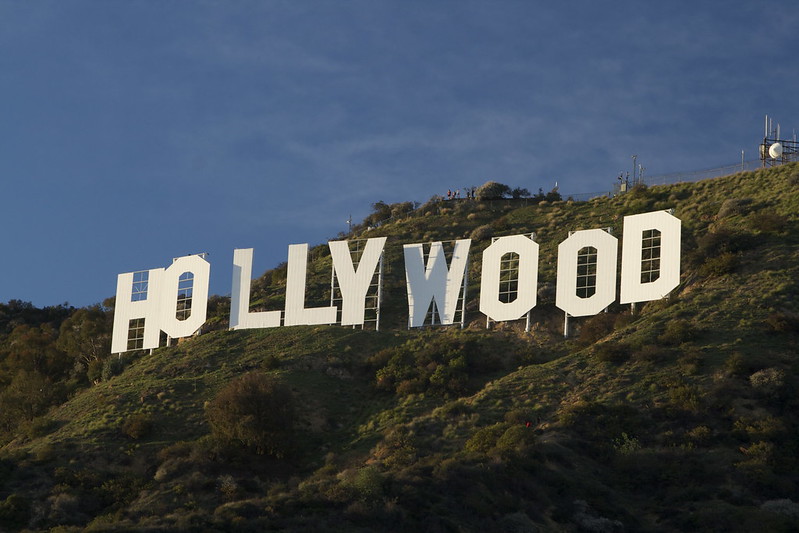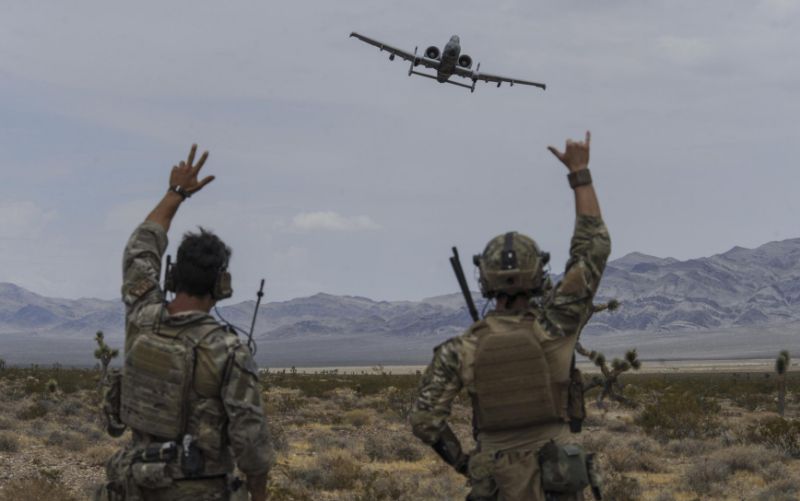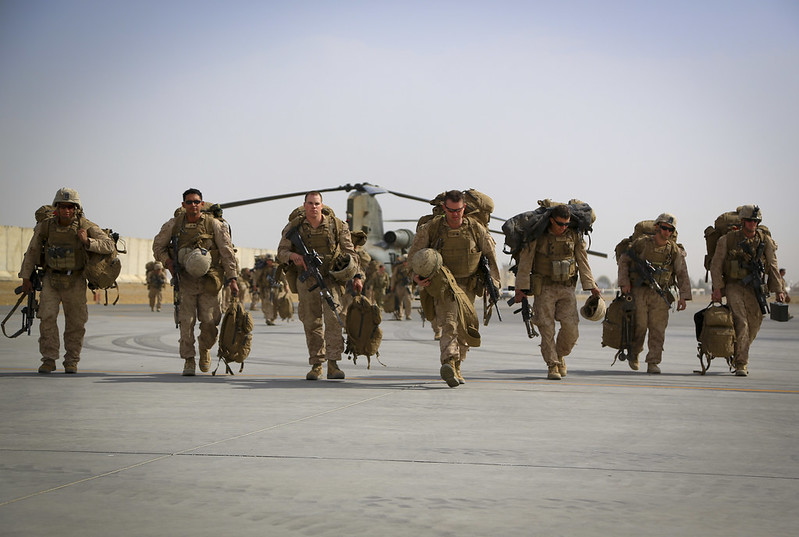From Berlin to Baghdad: Hollywood and the American war machine

Propaganda is a well-known component of the war machine, used in societies as early as the Ancient Greeks, though perhaps most well-known in totalitarian regimes such as the Nazi Party or Workers’ Party of Korea. Because of this connotation with well-known dictators, audiences in authoritarian countries are often aware of the propaganda they consume, while Western watchers remain in the dark. The average American sees movies as a form of escapism, providing a departure from daily life–not an avenue for state narrative pushing. Thus, they tend to miss the more subtle messaging.
If you visit Wilshire Boulevard in Los Angeles, you’ll find many things: The tallest building in California, Fox and MGM studios, Koreatown, and, notably, several outposts of the United States Department of Defense Entertainment Media Office (EMO). Every branch of the American military –save for the Marine Corps– manages a satellite office along this street to manage outreach with the entertainment industry.
The Pentagon’s influence on American entertainment is far from a new phenomenon; it is often said that when the U.S. entered the Second World War, so did Hollywood. From 1942 to 1945, the United States Bureau of Motion Pictures reviewed more than 1,500 scripts, revising or deleting any material that portrayed the war effort in an unfavourable light or made the American public seem ignorant of or opposed to the war. The Pentagon engaged directly with propaganda after realizing, according to the head of the office, that “the easiest way to inject a propaganda idea into most people’s mind is to let it go through the medium of an entertainment picture when they do not realize they’re being propagandized.”
During the Second World War, the Pentagon directly recruited Hollywood professionals previously trained to advertise products to sell war to the American public. Early war propaganda transformed fear and doubt into patriotic pride in American heroism. American propaganda is uniquely effective at producing media depicting militaristic heroes, promoting particularly affirming (and bankable) narratives in which the U.S. is positioned as the bearers of morality –engaging in sanctionable violence solely for the sake of the greater good. In the 1940s, film was a particularly effective vehicle for the promotion of certain narratives in the public consciousness, as more than 90 million Americans attended the movies every week, so the sentiments presented on screen cemented these ideas.
John Wayne took the mantle of the Hollywood WWII hero, acting in more than a dozen movies in the decades after the U.S. entered the conflict and becoming a household symbol of idealized American manhood and patriotism. The relationship between the American government and Hollywood continued to influence the media and became increasingly evident during the Vietnam War when an uptick in anti-war sentiment and demonstrations catalyzed intensified propaganda efforts. Wayne eventually wrote to President Lyndon B. Johnson, asking for his help to make a propaganda film about the Vietnam War –The Green Berets– which followed Col. Mike Kirby as he chose two teams of Green Berets as they embarked on a mission in South Vietnam. The Pentagon, as with many other projects, supplied props, allowed filming on military bases, and gave final approval of the script. It was later revealed that the atrocities attributed in the film to North Vietnamese fighters were, in fact, committed by American soldiers.

The post-war period following Vietnam was unique in that it did not witness the same kind of dramatic cuts to military spending that tend to follow major wars, largely due to the rising idea of a ‘national security state.’ The new mission of propaganda thus became to indoctrinate Americans with the idea of a perpetual threat –in that case, communism. The original Top Gun was released post-Vietnam and, according to producer Jerry Bruckheimer, would not have existed without military approval. Top Gun became the highest-grossing movie of 1986, and after the Navy set up recruiting stations outside movie theatres, recruitment increased by 500 percent. Though the propaganda in Top Gun may be less explicit –it’s a largely apolitical story with no actual war occurring– it still serves as a sort of public-relations campaign for military adventurism, restructuring the wider narrative that followed the American military after the controversies of Vietnam.
The idea of the eternal enemy became increasingly pervasive and took on a more solid form after 9/11 –terrorism. Following the attacks, Pentagon officials met with major Hollywood producers, directors, and screenwriters at the army-funded Institute for Creative Technologies to brainstorm future threats and scenarios. By November 2001, filmmakers were urged to hark back to the days of WWII to help sell the invasion of the Middle East by inciting a kind of rally-around-the-flag effect. Movies about the War on Terror sanitize or outright ignore the atrocities committed by the American military. Movies such as The Hurt Locker and Zero Dark Thirty blind their viewers to the abhorrent realities of American invasions in the Middle East, particularly loathsome intelligence-gathering techniques by strictly ignoring any possibility that American forces may not be an inherently positive force. These films distort reality –for example, promoting the idea that torture produces critical information when it verifiably does not– has real-life effects, illustrated by a 2014 survey which found that approximately 25 percent of people who watched either Argo or Zero Dark Thirty positively changed their opinion on the U.S. government and its actions.

Today, the EMO functions to inundate American media –and, by extension, the world– with the jingoistic ideals of the American war hero. In exchange for access to military facilities such as Camp Edwards and equipment, including F-18s, the EMO requires veto power over scripts. With this power, the EMO can promote weapons from major manufacturers such as Lockheed Martin, encourage recruitment, and ‘sanitize’ American military actions throughout history and around the world. Glen Roberts, the Pentagon’s Chief of Entertainment Media for the Pentagon, says their aim is to “project and protect the image of our armed forces,” working on close to 130 projects a year (including movies, television shows, video games, and documentaries) to “make sure that the productions that we support match our core values.” Although the EMO freely shares which projects they are involved with, they have no obligation to share which parts of the script they alter to fit their narrative –they are even exempt from the Freedom of Information Act. Although it is fairly well known that the EMO alters scripts that address contentious issues in military history, such as racism and sexism, it is extremely difficult to determine which films and scripts have received this treatment. The EMO heavily edits scripts to scapegoat individual ‘bad apples’ or entirely remove mentions of these issues, not acknowledging any kind of institutional concern.
It is unlikely that the American government will ever be short of controversial military engagements, so it’s safe to assume that the propaganda machine will be alive and well for the foreseeable future. In the future, one can only hope that the new age of social media activism will allow audiences to become more informed, consume information directly from the source, and form opinions outside those promoted by Hollywood.
Edited by Zach Brousseau.
Featured image: The Hollywood sign overlooking Los Angeles, California. Taken by Gnaphron. Licensed under CC BY-SA 2.0.
